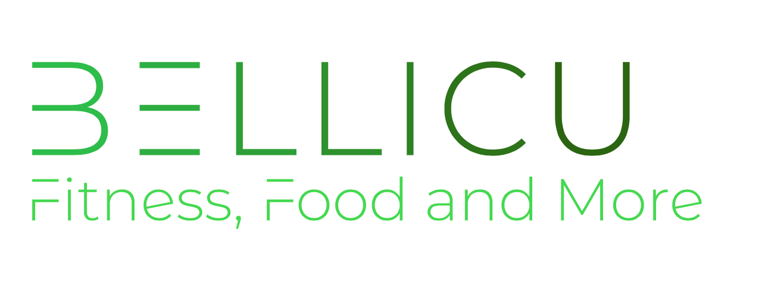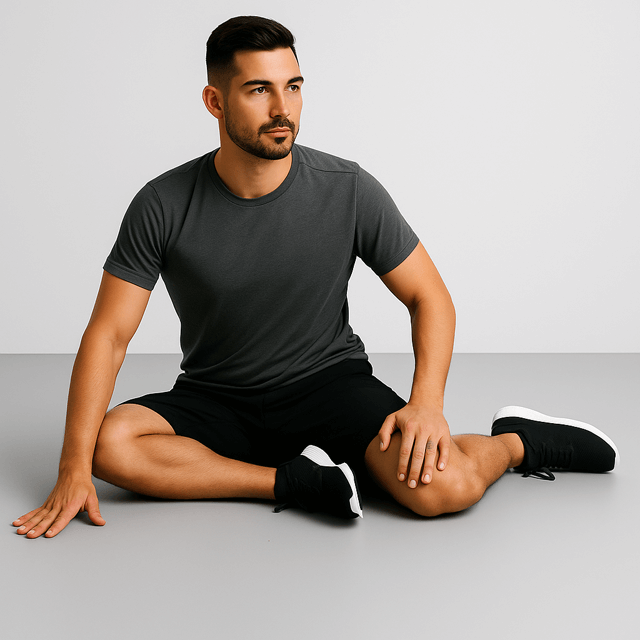

Unlock Your Hips
Why Hip Mobility Drives Athletic Performance
The Hidden Link Between Tight Hips and Sluggish Gains
Tight hips don’t just feel stiff—they steal power, limit your range of motion, and silently sabotage your lifts. Whether you’re squatting heavy, lunging through a HIIT session, or trying to perfect your deadlift form, your hips play a foundational role in how well your body moves and how safely you generate force.
Yet many athletes—even experienced lifters—ignore hip mobility until pain or plateaus force them to pay attention. In reality, incorporating targeted hip mobility exercises into your routine can unlock strength, stability, and control you didn’t realize you were missing.
This guide breaks down why hip mobility is crucial for athletic performance, how it affects compound lifts like squats and deadlifts, and which drills actually work. If you want to move better, lift heavier, and reduce your risk of injury, it's time to open up those hips—literally.
Why Hip Mobility Matters for Every Athlete
Your Hips Are Your Power Base
The hip joint is a large, complex ball-and-socket structure capable of multi-directional movement—flexion, extension, rotation, and abduction. In athletic performance, your hips are the primary engine that drives movement. Whether you’re exploding off the line in a sprint, powering through a squat, or changing direction on the field, the hips are responsible for transferring energy between your lower and upper body.
When your hips move freely and efficiently, you can generate more force, absorb impact better, and maintain proper alignment through dynamic movement patterns. But when mobility is compromised—due to prolonged sitting, previous injuries, or poor movement habits—your ability to load and stabilize the hips suffers. The result? Less strength output, slower progress, and a much higher risk of injury.
Hip mobility isn’t just about flexibility. It’s about controlled, strong movement through a full range of motion—something that separates a truly athletic mover from someone just going through the motions.
Poor Hip Mobility = Compensations and Pain
When the hips can’t move as they should, your body compensates. These compensations aren’t immediately obvious—but over time, they take a toll. For example:
Lower back overextension becomes a substitute for limited hip extension during deadlifts or kettlebell swings, leading to chronic tightness or even disc issues.
Anterior pelvic tilt, a common result of tight hip flexors, shifts posture out of alignment and creates excessive lumbar curve.
Knees caving in (valgus collapse) during squats or lunges often signals that the hips can’t externally rotate properly.
Loss of depth in squats or deadlifts occurs when tight hips prevent safe, full-range motion.
Glute amnesia—when your glutes don’t activate well—often arises from poor hip control, forcing the quads or hamstrings to do too much work.
Over time, these faulty mechanics create a domino effect: poor movement leads to overuse injuries, imbalances, and frustrating plateaus in performance. Even if you’re strong, limited hip mobility caps your potential and opens the door to chronic pain.
Addressing this early—through targeted hip mobility exercises—can dramatically improve movement quality, lifting form, and long-term joint health.
The Science Behind Hip Mobility and Strength
Mobility vs. Flexibility – Why the Distinction Matters
Many athletes confuse mobility with flexibility, but they are not the same. Flexibility is your ability to passively stretch a muscle—think of pulling your leg toward your chest with your hands. Mobility, on the other hand, is your ability to actively move through a range of motion with control, stability, and strength.
This distinction is critical. You can be flexible (able to stretch far) yet lack mobility (unable to control that range under load or speed). In strength training, mobility is what allows you to hit depth in a squat with control, maintain a neutral spine in a deadlift under load, and move dynamically without breaking down form.
Improving mobility trains not just the muscles, but also the joint capsules, nervous system coordination, and movement efficiency—making it far more functional for athletes.
Why Hip Mobility Enhances Lifts
Hip mobility plays a direct and measurable role in some of your most important lifts:
Squats: Deep squatting demands a combination of hip flexion, external rotation, and abduction. Without adequate hip mobility, you’ll likely experience "butt wink" (posterior pelvic tilt), inward knee collapse, or shallow squat depth—all of which limit strength gains and strain your lumbar spine.
Deadlifts: A proper hip hinge is crucial here. Tight hip flexors, hamstrings, or adductors can restrict hinge motion, causing rounding in the back or shifting tension into the knees or traps instead of the glutes and hamstrings.
Lunges: These test single-leg hip stability and require both hip flexion (front leg) and extension (rear leg). Poor mobility often leads to forward torso lean, wobbling knees, or over-reliance on the quads to compensate for inactive glutes.
Without full access to your hip range of motion, your body can’t express its true strength potential. And more importantly—you can’t do it safely. Investing in mobility means you’re not just increasing joint freedom; you’re building a foundation for efficient power and longevity.
Best Hip Mobility Exercises for Squats, Deadlifts & Lunges
These exercises were selected specifically to support compound lifts and real-world athletic movement. Each drill targets the most common mobility limitations in the hips—tight flexors, limited external rotation, weak glute engagement, or restricted adductor range.
You don’t need to do them all in one session. Instead, pick 2–4 based on your sport or lifting focus. Rotate weekly or add to warm-ups and cooldowns for consistent progress.
1. 90/90 Hip Switches
Target: Internal + external rotation of both hips
Why it works: Most lifters and runners are weak in internal rotation, which limits clean squat and lunge mechanics. This drill builds controlled hip rotation without compensation from the spine.
How to do it:
Sit on the floor with both knees bent at 90°, one leg in front of you (external rotation), one to the side (internal rotation).
Sit tall and slowly rotate both legs to switch sides—do not use your hands unless needed.
Keep feet planted and torso upright as you move.
Coaching cue: Think "knee to knee" as you rotate. Stay slow and controlled.
Regression: Prop your hips up on a yoga block or folded towel if you can’t sit upright.
Reps: 3 sets of 10 slow reps (5 each side)


2. Deep Goblet Squat Holds (Prying Squats)
Target: Adductors, hip flexion, ankle dorsiflexion
Why it works: Helps you own the bottom of the squat, improving depth and opening the hips safely.
How to do it:
Hold a kettlebell or dumbbell at chest level.
Sink into a deep squat with heels flat and back straight.
Use your elbows to push knees outward, prying the hips open.
Gently shift side-to-side and breathe deeply.
Coaching cue: Keep your spine tall—don’t collapse forward. Let the hips, not the back, guide the movement.
Reps: Hold for 30–60 seconds, 2–3 rounds
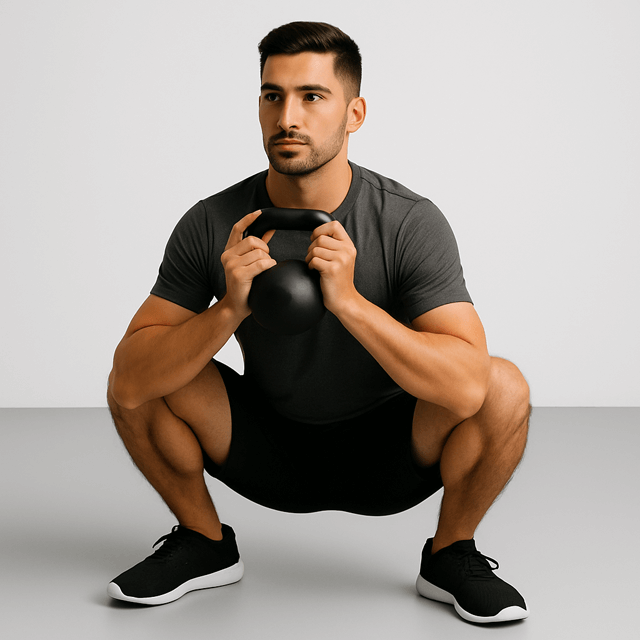

3. World’s Greatest Stretch (Lunge with Thoracic Rotation)
Target: Hip flexors, adductors, hamstrings, and thoracic spine
Why it works: Combines multiple mobility patterns in one—great for athletes and lifters alike.
How to do it:
Step into a deep lunge with your right leg forward.
Place your left hand on the floor and twist your right arm up toward the ceiling.
Look at your raised hand to complete the spinal rotation.
Return and switch sides.
Coaching cue: Keep the back leg long and strong—don’t let the back knee collapse inward.
Reps: 3–4 reps per side, 2 rounds
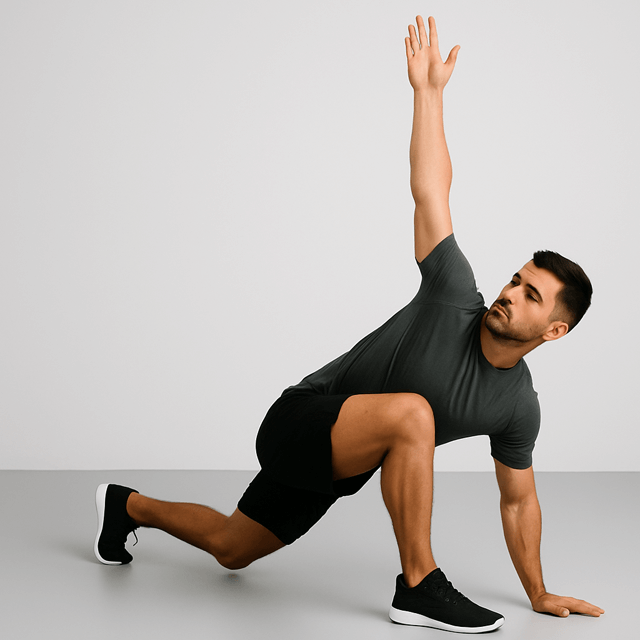

4. Banded Hip Distractions
Target: Joint capsule of the hip
Why it works: Reduces restriction inside the hip joint, not just in the muscles. Ideal for those with pinching during squats or lunges.
How to do it:
Anchor a resistance band low behind you.
Loop the band around the top of your thigh, facing away from the anchor.
Step forward into a lunge, letting the band pull your femur backward.
Gently rock forward and side-to-side.
Coaching cue: Keep your core engaged. Don’t let your lower back take over.
Reps: 1–2 minutes per side, slow and steady
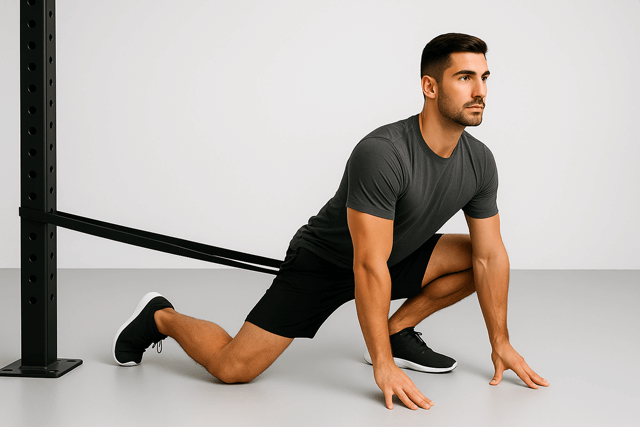

5. Cossack Squats
Target: Adductors, lateral hip movement
Why it works: Builds strength and mobility in the frontal plane—key for athletes and field sport players. Also mimics the hip opening needed for deep squats.
How to do it:
Stand in a wide stance with toes slightly turned out.
Shift weight into your right heel, bending the knee while keeping your left leg straight.
Keep the heel down and chest tall.
Push back to center and switch sides.
Coaching cue: Move slowly and stay grounded. Don’t let the knee collapse inward.
Regression: Use a TRX or pole for support.
Reps: 6–8 per side, 2 rounds
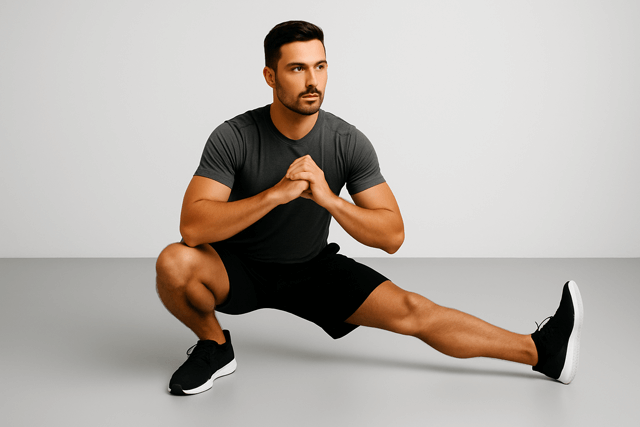

6. Glute Bridge with March
Target: Glutes, hip extension, anti-rotation core strength
Why it works: Teaches your glutes to fire symmetrically, even under shifting loads—essential for deadlifts, squats, and injury prevention.
How to do it:
Lie on your back, knees bent, feet flat and hip-width apart.
Lift into a glute bridge, squeezing your glutes.
While holding the bridge, slowly lift one foot off the ground—then switch.
Keep hips level the whole time.
Coaching cue: Imagine a glass of water on your pelvis—don’t let it spill as you march.
Reps: 2 sets of 10–12 marches (5–6 per leg)
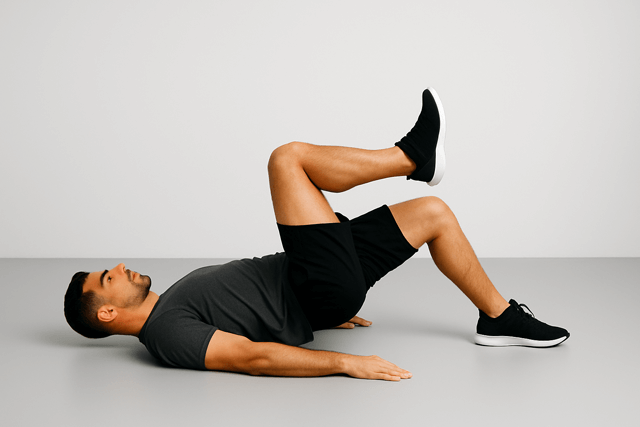

When to Do Hip Mobility Exercises
Many athletes think mobility is something you squeeze in “if there’s time”—but integrating it with intention can yield measurable improvements in performance, posture, and recovery.
Here’s when and how to use hip mobility exercises most effectively, depending on your goals and training schedule.
Before Training (As a Dynamic Warm-Up)
This is one of the best times to work on hip mobility—when the body is fresh and you're preparing for movement patterns like squats, lunges, or hinges.
Goal: Prime the nervous system and joints for athletic range and motor control.
How to structure:
Choose 2–3 drills that mirror your workout patterns.
Focus on active movement rather than long holds.
Combine with activation exercises (like glute bridges) for best results.
Example: Pre-Squat Session
90/90 Hip Switches – 2 sets
Deep Goblet Hold with Prying – 60 seconds
Cossack Squats – 6 reps/side
You’ll notice more depth, better alignment, and reduced knee or back strain during your lifts.
After Training (As a Cooldown)
Post-workout is the ideal window for slowing down the nervous system and addressing any tight areas before they become problematic.
Goal: Ease post-exercise tightness and support tissue recovery.
How to structure:
Spend 10–15 minutes doing slower, deeper holds.
Focus on breathwork and relaxation during each drill.
Don’t overload—this isn’t a second workout.
Example: Post-Deadlift Mobility
Banded Hip Distraction – 1 min/side
World’s Greatest Stretch – 3 reps/side
Glute Bridge with March – 2 sets
Over time, these cooldowns improve long-term range and reduce recovery time.
On Active Recovery or Off Days
If you have a rest day, mobility work can accelerate recovery while reinforcing quality movement.
Goal: Maintain joint health and retrain better movement patterns.
How to structure:
Make it feel like movement meditation, not a grind.
Combine with light cardio or walking to increase circulation.
Use it to “scan” for tight spots or imbalances.
Tip: Add light band resistance or slow tempo for extra benefit without adding strain.
Between Sets of Strength Work (Micro-Mobility)
This underrated strategy helps you stay mobile without dedicating extra time. While you’re resting from a heavy lift, do a light mobility drill that supports your form.
Goal: Use downtime productively and reinforce joint positioning under fatigue.
Example: Between Squat Sets
1 set of 90/90 Switches
20–30 seconds of Goblet Squat Pries
This primes your hips for deeper, safer sets—especially later in your session.
Early Morning or Before Bed (Movement Hygiene)
Mobility doesn’t need to be intense. Doing just 5–10 minutes of light hip mobility in the morning or before bed helps reverse stiffness from sitting, travel, or sleep.
Best picks:
Morning: Glute Bridge Marches, Cossack Squats
Evening: Prying Squat Hold, Banded Hip Distraction
Making mobility part of your daily rhythm keeps you loose, aligned, and ready to perform.
Programming Mobility Without Losing Time
Let’s be honest: most athletes and lifters skip mobility because they believe it takes too long or “doesn’t count” as real training. But mobility work doesn’t need to be a 30-minute routine to be effective. In fact, the smartest strategy is integration—sprinkling it into your current schedule so it supports your training rather than replacing it.
Here’s how to program hip mobility without sacrificing gains or time:
Stack It Into Your Warm-Up
Mobility drills are a natural fit for your warm-up—replacing aimless foam rolling or treadmill jogging with intentional, pattern-specific movements.
How to do it:
Pick 2–3 exercises based on your main lift for the day (e.g., squats = prying squats + 90/90s).
Keep it under 10 minutes.
Pair mobility with light activation drills for better results.
Example: Squat Day Warm-Up Flow
90/90 Hip Switches – 10 reps
Deep Goblet Hold – 45 seconds
Glute Bridge with March – 10 reps
This preps your hips, glutes, and core in one compact circuit—priming you for deeper squats and more stable lifts.
Superset Mobility With Strength Sets
If you rest 90+ seconds between heavy sets, that’s an opportunity. Use that time to perform low-intensity mobility drillsthat reinforce clean movement.
Why it works:
Keeps you moving between sets
Reinforces positioning when muscles are under fatigue
Builds habits without requiring extra training blocks
Example: Between Deadlift Sets
Set 1: 5 reps
Rest: 60 seconds of Banded Hip Distraction
Set 2: 5 reps
Rest: 6 Cossack Squats
Bonus: This can even help restore range of motion between heavy sets, especially if tightness creeps in mid-session.
Dedicate One Short Session a Week
A focused 15–20 minute “Mobility Mini-Session” once a week is enough to restore range, reduce stiffness, and reinforce functional patterns—especially if you're sitting a lot during the week.
What it looks like:
Start with light movement (e.g., walking or cycling for 5 minutes)
Do 3–5 mobility drills at slow tempo
Add breathwork (diaphragmatic or box breathing) to finish
Sample Routine:
World’s Greatest Stretch – 3 reps/side
Prying Goblet Squat – 60 seconds
90/90 Rotations – 2 rounds
Glute Bridge Hold – 30 seconds
Banded Distraction – 1 min/side
You’ll feel looser and more upright almost instantly.
Match Drills to Your Training Focus
Mobility doesn’t need to be general. Make it purposeful and strategic.


Mobility isn’t about stretching aimlessly—it’s about preparing your joints to handle force with precision.
Stay Consistent Over Intense
You don’t need to go “hard” on mobility. You need to go often. 5–10 minutes a few times a week will do far more for your hips than the occasional 45-minute stretch binge.
Think of mobility as maintenance—like brushing your teeth. It’s not sexy, but it keeps your movement clean and pain-free.
Remember: The goal isn’t to become a contortionist. The goal is to move better, lift longer, and perform at your best—without joint pain holding you back.
Hip Mobility for Lifters, Runners, and Athletes
Hip mobility isn’t one-size-fits-all. Depending on your sport or training style, your hips face different demands—whether it's producing max force, repeating movement patterns efficiently, or changing direction under pressure.
The key is mobility that’s relevant to your movement, not generic stretching. Below is a breakdown of how to tailor your hip mobility exercises based on your performance goals.
Strength Lifters (Powerlifters & Bodybuilders)
Primary demands:
Deep, stable hip flexion (for squats)
Controlled external rotation (to prevent knees caving in)
Strong hip extension (for deadlifts and lockouts)
Common issues:
Poor squat depth
Butt wink at the bottom
Lower back strain from poor hip hinge mechanics
Mobility Priorities:
Improve external rotation (for squat stance control)
Increase deep hip flexion (to hit depth under load)
Mobilize the capsule (to reduce impingement)
Top Picks:
90/90 Hip Switches
Goblet Prying Squats
Banded Hip Distractions
Glute Bridge Marches (to retrain glute control)
Tip: Superset mobility with accessory lifts to reinforce new patterns (e.g., do 90/90s between leg press sets).
Runners and Endurance Athletes
Primary demands:
Repeated hip flexion and extension
Efficient stride mechanics
Pelvic stability and shock absorption
Common issues:
Tight hip flexors from high mileage
Weak glutes and overactive quads
Pelvic drop and gait asymmetry
Mobility Priorities:
Open the front of the hip (especially the rectus femoris and psoas)
Activate posterior chain
Improve symmetry between sides
Top Picks:
World’s Greatest Stretch
Glute Bridge Marches
Cossack Squats (for lateral balance and control)
Hip Flexor Foam Rolling (optional pre-mobility prep)
Tip: Add short mobility flows post-run to prevent stiffness from becoming long-term limitations.
Multi-Sport or Field Athletes (Football, Basketball, Martial Arts)
Primary demands:
Explosive multidirectional movement
Rapid hip deceleration and re-acceleration
Rotation, cutting, lateral shuffling, and jumping
Common issues:
Limited lateral mobility
Imbalances from one-sided movement (dominant leg)
Hip impingement symptoms during directional changes
Mobility Priorities:
Restore internal/external rotation
Improve side-to-side (frontal plane) control
Mobilize hips dynamically and with load
Top Picks:
Cossack Squats (frontal plane strength)
90/90 Switches (control across both hips)
Dynamic Banded Distractions
Goblet Squat with Shift (weighted lateral shifting in the hole)
Tip: Integrate hip mobility directly into warm-ups for speed or agility drills to keep things sport-specific.
Bonus: Desk-Bound Athletes (Lifters Who Sit All Day)
Even if you train hard, long hours of sitting can cause chronic shortening of the hip flexors, poor glute activation, and anterior pelvic tilt.
Prescription:
Perform a quick 5–8 minute hip mobility circuit in the middle of your day (or before your workout).
Emphasize glute reactivation and hip extension drills.
Top 3:
Glute Bridge Marches
Banded Hip Distractions
World’s Greatest Stretch
This athlete-specific approach ensures that your mobility work is functional, not generic—and makes your training more efficient by directly targeting what your sport demands most.
Signs Your Hip Mobility Is Improving
Hip mobility progress isn’t always as obvious as adding 20 pounds to your squat or running a faster 5K. But there are subtle, measurable improvements you can watch for—both in how you feel and how you move.
Think of these as green flags that your mobility work is paying off:
Greater Squat Depth Without Compromise
You can now drop into a deeper squat without butt wink, knee collapse, or leaning forward. Your pelvis stays stable, your spine remains neutral, and your movement feels more natural—no grinding at the bottom.
Bonus indicator: Your squat “feels easier” even with the same weight.
Less Low Back Tightness Post-Workout
Previously, squats or deadlifts left you with a cranky low back. Now? You finish your sessions feeling more balanced, with effort properly distributed through your hips, glutes, and core—not overloaded onto your lumbar spine.
This is a huge win for long-term spinal health and training longevity.
Knees Track Better in Squats and Lunges
Improved hip external rotation allows your knees to track naturally outward, rather than collapsing inward under load. This protects your knees, improves force production, and boosts confidence under the bar.
Pro tip: Film your squat or lunge and compare before-and-after side angles—look for less valgus collapse and better alignment.
Glutes Fire Earlier and Harder
When mobility improves, glute activation improves too. That means:
Better lockouts in deadlifts
More power in jumps and sprints
Less quad dominance in squats and lunges
You may even notice glute soreness in the right places for the first time—another sign your hips are finally moving well enough for your muscles to work as they should.
Improved Single-Leg Stability
You no longer wobble through split squats, lunges, or step-ups. Hip mobility and control give you the stability to balance, load, and push off powerfully, even on one leg.
This is especially noticeable if you’re an athlete who relies on fast lateral cuts or jumps.
Daily Movement Feels Smoother
The improvements don’t stop in the gym. You may notice:
Sitting cross-legged is easier
Standing from a chair takes less effort
Stiffness after long drives or desk sessions is reduced
Walking stride feels smoother and more symmetrical
These subtle improvements are real proof that your mobility work is translating into everyday functional strength.
Your Body Asks for It
Strangely enough, the more consistent you are, the more your body will crave it. You may notice you naturally drop into a deep squat when warming up, or do 90/90 switches on the floor while watching TV.
Final Thoughts – Unlock Strength, Not Just Range
Hip mobility isn’t about becoming more flexible just for the sake of it. It’s about moving better under load, with power, control, and longevity. Every squat, deadlift, sprint, or lunge you perform is either limited or enhanced by your hips.
If your hips can’t move well, your body will find a way—but that way usually comes at a cost: back pain, knee issues, compensation patterns, or plateaus. But when you invest in mobility—real, functional, strength-focused mobility—you’re not just improving how far you can move, you’re improving how well you move.
Consistency is key. Just 5–10 focused minutes a few times per week can:
Improve your lifting technique
Reduce joint strain
Unlock better glute activation
Help you train harder, longer, and pain-free
It’s not a luxury. It’s not optional. For serious athletes and lifters, hip mobility is performance insurance.
Reference list
Hip Mobility and Athletic Performance
Study: Which factors differentiate athletes with hip/groin pain from those without? A systematic review with meta-analysis
Source: British Journal of Sports Medicine (Mosler et al., 2015)
Link: https://pubmed.ncbi.nlm.nih.gov/26031646/
Summary: This systematic review found that athletes with hip/groin pain exhibited reduced hip internal rotation range of motion and decreased strength on the adductor squeeze test, highlighting the importance of hip mobility in athletic performance.Mobility vs. Flexibility
Study: The Role of Core Stability in Athletic Function
Source: Sports Medicine (Kibler et al., 2006)
Link: https://pubmed.ncbi.nlm.nih.gov/16526831/
Summary: This article discusses how core stability, including hip mobility, is essential for efficient athletic movement, emphasizing the distinction between mobility (active control) and flexibility (passive range).Hip Mobility and Squat Performance
Study: Lower Extremity Strength and the Range of Motion in Relation to Squat Depth
Source: Journal of Human Kinetics (Kim et al., 2015)
Link: https://pubmed.ncbi.nlm.nih.gov/25964810/
Summary: This study found that hip flexion range of motion and ankle dorsiflexion are significantly associated with squat depth, indicating that hip mobility is crucial for optimal squat performance.Glute Activation and Hip Mobility
Study: Gluteus Maximus Activation during Common Strength and Hypertrophy Exercises: A Systematic Review
Source: International Journal of Sports Physical Therapy (Macadam et al., 2019)
Link: https://pubmed.ncbi.nlm.nih.gov/32132843/
Summary: This systematic review analyzed gluteus maximus activation levels during various strength exercises, concluding that exercises incorporating hip extension effectively activate the glutes, enhancing hip mobility and strength.Postural Compensation from Hip Tightness
Study: A randomized clinical trial for the effect of static stretching and strengthening exercise on anterior pelvic tilt angle and low back pain in sedentary individuals
Source: Journal of Bodywork and Movement Therapies (Lee et al., 2020)
Link: https://pubmed.ncbi.nlm.nih.gov/32825981/
Summary: This study demonstrated that targeted stretching and strengthening exercises can reduce anterior pelvic tilt and associated low back pain, underscoring the impact of hip tightness on posture and discomfort.Hip Mobility and Injury Prevention in Sport
Study: Restriction in hip internal rotation is associated with an increased risk of ACL injury
Source: The American Journal of Sports Medicine (Beaulieu et al., 2014)
Link: https://pubmed.ncbi.nlm.nih.gov/25209211/
Summary: The study found that limited hip internal rotation is linked to a higher risk of anterior cruciate ligament (ACL) injuries, highlighting the importance of hip mobility in injury prevention for athletes.
